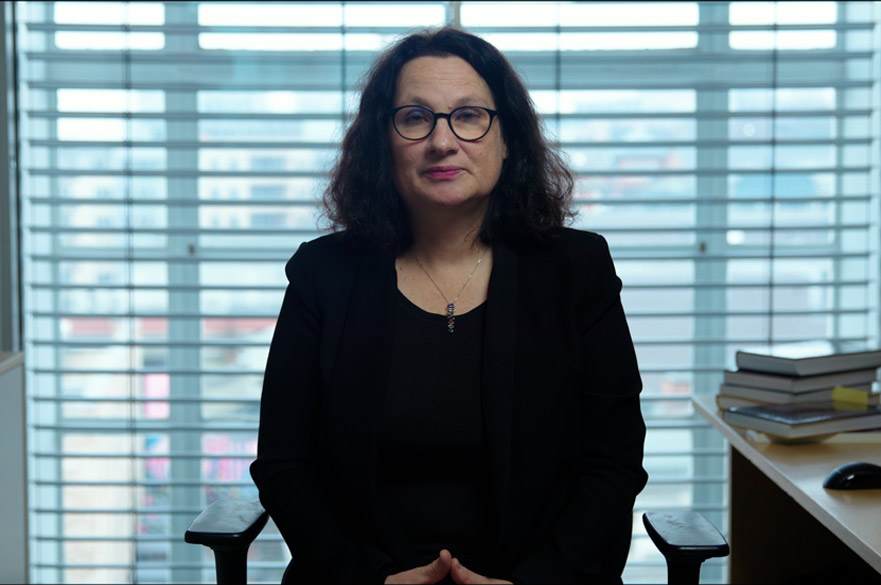Real lives, fake organs: shaping medical technologies
Richard Arm, Senior Research Fellow
From a young age, I always wanted to make a difference in the world; to leave it a little better than the one I was born into. I knew I wanted to be an artist, as I’d always been fascinated by the works of Michelangelo and DaVinci. But, growing up in the 1980s, I knew I was hundreds of years too late for this kind of art – these artists were long gone, and their skills lost in time.
My research journey
After studying art and design courses at college and university, I started my career as a visual effects artist. Making models for movies, adverts and TV shows, I was surrounded by talented and driven individuals who inspired me to push the boundaries of my work. Some of my most enjoyable work during this time included making models for Lamborghini, the RAF and the BBC. I was lucky enough to land a job at Elstree film studios in London, where I produced visual effects for movies like James Bond and Johnny English.
Some time later, after a brief period as a prototype engineer in manufacturing, I became a Senior Technician for visual arts at NTU, specialising in fabrication techniques using moulding and casting. Driven by my passion for research and learning, I started lecturing and researching alongside my technical role, before finally moving into research full-time a few years later.
Today, I am still inspired by the way ancient artists were able to pull anatomical forms from mediums as immovable as marble, with such seemingly primitive tools. Their ability to make stone appear as soft flesh moves me to this day and I find myself looking for any excuse to visit Italy, the home of the renaissance, whenever I can.
Looking back now, I never thought my work in the arts would lead me down a path where I would be helping others to save lives.
Shaping the future of medical technologies
One day, during my time as a technician, a surgeon approached me and asked if it was possible to create 3D models of internal human organs. He explained to me that trainee surgeons often don’t have a lot of time to practice new procedures, and that human cadavers are not widely available to practice on.
I told him I’d never considered how to make human organs before, but that I would find a way to help him. The result was a mix of traditional life casting and silicone casting, using materials that were familiar to me – but in a combination I’d never used before. I was fascinated by the potential of this work.
So, I began looking for better ways to imitate human tissue and found that there was a whole discipline dedicated to the process called ‘Medical Modelling’. However, it was missing a fundamental step: how to turn patient's scan data into a 3D-printed organ replica that looks and feels like a real human organ.
Through extensive research, I eventually figured it out. Now, I use medical scan data, 3D printers and traditional skills to make biological imitations of human anatomy that look and feel real enough to practice surgery on.
Through the commercialisation of my work, air ambulance crews, first responders, trauma teams, medical schools and military field surgical teams are now able to train for emergency surgery using the models I have developed. Surgeons can plan surgeries, as well as rehearse and teach procedures safely, reducing the risk of complications and even death.
An exciting future lies ahead for me – new collaborations with international corporations leading the way in robotic surgery and implantable devices that will help surgeons of the future learn their skills in risk-free environments. Seeing the impact of my research and how it benefits surgeons and patients is a great feeling.
My experience at NTU
Being a researcher is the best job in the world. A passion for innovation is the engine that helps drive humanity forward, and that’s the thing I like the most about my job at NTU. I feel empowered to contribute to our society. I am lucky to be part of an institution that really values ideas, no matter where they come from. It doesn’t even feel like work to me; I am doing what I love every day.
What’s special about the research community at NTU is our unique collaborative networks and interdisciplinary blend of expertise. It’s astonishing what our researchers are able to achieve by working together in new and innovative ways.
Follow my story
My story doesn’t end here. Keep up to date with me and my research by keeping an eye on my academic profile or following me on Twitter @Richardarm1. For anything else, please feel free to email me on richard.arm@ntu.ac.uk.
Richard Arm
Richard is a Senior Research Fellow in the Nottingham School of Art & Design, with a focus on several live defence projects revolving around the use of new technology or methodologies to support medical device design and configuration of technology, as well as education of emergency medical treatments.
Meet the researchers
Forget lab coats and research papers. It's time to get personal. Meet the people behind the research and uncover fascinating truths about their experiences.


Ursula F. Ott
International decision making
Learn how Ursula is connecting cultures to improve business negotiations